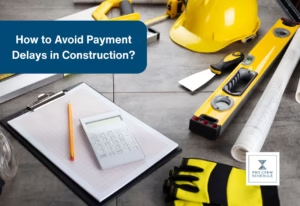Subcontractor default has been a major problem that is neither under-reported nor understated. For sure, you are already familiar with this and its consequences. Yet, surprisingly, it is still unexpected when one of your subs goes into default with your projects. Since the last decade, the construction economy began to tank, and the sector has experienced many subcontractor defaults.
But now that the economy is slowly recovering, you may think that defaults will be less likely to happen. Unfortunately, the truth is that subcontractor defaults are most likely three times more likely to occur during this recuperating period than it ever was in the economic downturn.
Our point is simple, and it is more crucial now than ever to review why your subs fail and what everyone else should be doing, especially you as their project leader, to fix these failures effectively.
But Why Do Subs Fail?
Subcontractor failure is a real problem. However, you can opt for options to mitigate the risks of these failures. Go first with a much better understanding of why your subs tend to fail. This will help you fix the problem at the core.
But here, we cite all kinds of issues from every aspect of your business that can be why your subs fail. Sub defaults do not happen because your subs want it to happen; sometimes, other factors are absolutely out of their control.
Managerial problems:
- Insufficient accounting, financial, and construction crew management solutions
- Business strategy changes
- Poor lead contractor, owner, or project selection
Labor and material problems:
- Shortage of labor and materials
- Tariffs
- Unrecovered cost escalations
- Tools and equipment theft
Uncontrollable factors:
- Severe weather hindrances
- Unexpected economic failures
- Difficult contract terms and working environment
- · Changes in the job site conditions
- Illness, death, or departure of necessary employees
- Material and equipment shortages and price increases
- Labor shortages and difficulties
Financial signs of failure:
- Bills are past due
- Tight cash flow
- Bank lines of credit are borrowed to the limit and credit
- Vendors and suppliers demand COD or cash on delivery supplies and materials
Business plan problems:
- No contingency goals, plans, or objectives
- No road map for future plans
Project management problems:
- Insufficient project supervision
- Projects are not completed on time
- Inability to find sensible prices on change orders
- Projects are moving at a slower pace
- Safety violations on the job site
- One or more projects have a claim
Poor estimating and job cost reporting:
- Operating losses
- Revenue and profit margins
- Contractor bids low to get new projects out of desperation
Communication issues:
- A lot of disputes between the project owner, contractor, and the subs
- Poor communication between the field workers and management
Six Tips in Dealing with Subcontractor Default
Again, dealing with defaulting subs can become your biggest nightmare as a contractor. A non-performing sub or one not meeting its contractual responsibilities can wreak havoc on your projects. Here we will share with you six pro tips when dealing with subcontractor default.
1. Prequalify your subcontractors
Even before you take pricing or solicit bids from your subs, you have to make sure they can complete the entire work physically and financially. Review your prequalified subs to determine who are not experienced with the scope and size of the project. You may have a few prequalified electric contractors with who you are regularly working, and you can invite them to bid on the project.
If a sub of yours ever asks why he is not invited to bid, be open as possible and make sure to explain the situation. You may want to maintain a good relationship with your subs. However, there is a need for compromise. You need to include only the ones who are fitting to bid, those who are prequalified.
2. Craft a plan
Whether you discover it by yourself or if the sub comes to you about it, you have to sit down and work with them and correct the issues. Once you have determined these issues, the root cause is the next thing you need to figure out. The root cause can be difficulty collaborating with one of the subs or a supplier not delivering materials on time, which can be related to cash flow issues.
If you found yourself dealing with these issues, you better sit down with the subs. Discuss what options are available and what possible assistance you can provide to help them get back on track. This action is typically the most cost effective and easiest solution.
3. Integrate Subcontractor Scheduling Software
One of the many reasons your subs fail is that they are not supervised well. While you oversee other aspects of your projects, managing your crew can be hard as a contractor. Over time, work has become complex and hard to manage. That is why you need to level up your effort if you want to keep on track of everything, especially your people.
Integrate construction techs, especially those mainly designed for your unique needs. Take Pro Crew Schedule, a top-tier crew scheduling software that acts as an aid for streamlining your workflows and existing operations. It has everything you need to manage every aspect of your business, from your operations to your people, to finances and budget, to materials and equipment.
4. Know the signs
Your subs may not always be forthcoming when they start experiencing difficulties. Even if they perform their respective work and stay on schedule, trouble can be brewing beneath the surface. That is why it is crucial to keep an attentive eye on all of your subs to determine any signs of difficulties they face or are perhaps at risk of defaulting.
Here are some common signs of subs running into problems:
- A sudden decrease in the workforce
- Delayed deliveries of materials
- Change in demeanor
- Failing to cooperate during work
As the project leader or contractor, always be proactive in overseeing your subcontractors, especially if you suspect things may not be getting off track. And do not be fooled. If you begin noticing some of the red flags, you must address them instantly with your subs, despite of whether they are performing the work as necessary. Incorporating construction scheduling software is of big help when managing your subcontractors. You can track everything, including their respective tasks, their tools and equipment, and their current location.
Easy, seamless, and easy to incorporate. That’s how Pro Crew Schedule works.
5. Put it in the contract
Ensure your contract includes provisions detailing your rights to sustain work, suspend the sub’s performance, or perhaps terminate the agreement. Failing to perform work as necessary must be covered. However, you may want to include other instances like delaying payments to the subs and suppliers. The contact has to include also the rights to reimbursement for any considerable costs you incur should you need to step in and take action.
If your subcontractor fails repeatedly, you must follow any notice requirements before you exercise your rights to supplement their job and take action. You should also know that common contract documents require you to provide your subs with written notice of default and a specific deadline for curing the default or mistakes.
To further protect yourself and your construction firm, the contract must also include a provision that instantly terminates the contract if the sub-files for bankruptcy.
6. Protect yourself
The two most typical methods for protecting yourself against subcontractor default are subcontractor default insurance and subcontractor bonds. Both are being used to manage the risks of subcontractor default, but there are a lot of differences in how they work, who bears the risks, and what exact parties are protected.
- Subcontractor performance bond: This is a three-party agreement between contractors, surety, and subs. The surety is mainly responsible for prequalifying the subs and expects the risks should a default occur. The surety is responsible for managing the default, which is why they must be contacted immediately if the subcontract default is happening or is at risk. There will be people who will arrange and pay to have your projects completed regardless of the defaults.
- Subcontractor default insurance: This is a two-party insurance policy between the contractor and insurer. Sometimes, the owner will take out the default insurance policy to protect themselves. The contractor is solely responsible for prequalifying the subs.
Pro Crew Schedule Has Its Advantages
You’ll be facing a lot of defaults for sure, and each situation is different. Thus, your approach should also be different but rational. Always have an honest and open discussion with your subs if you feel like things are getting down or reaching the boiling point.
Your response to a failing and defaulting subcontractor must be proportionate to how much it will impact you effectively. These issues can typically be resolved by working well with your subs than going against them inappropriately.
Perhaps, you need to exert more effort in supervising them. Leverage technologies that can help you oversee your subs and ensure they are working to your standards. Everything is possible and accessible using the Pro Crew schedule, acting as the central platform that allows you to get things properly organized and streamlined.
Check out all the features. And get started with a 30-day trial for free.







